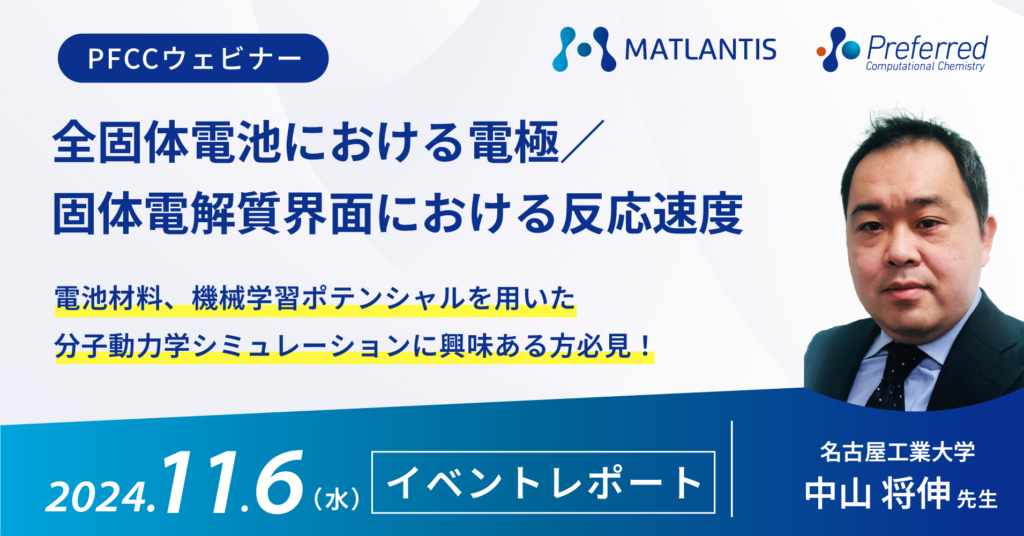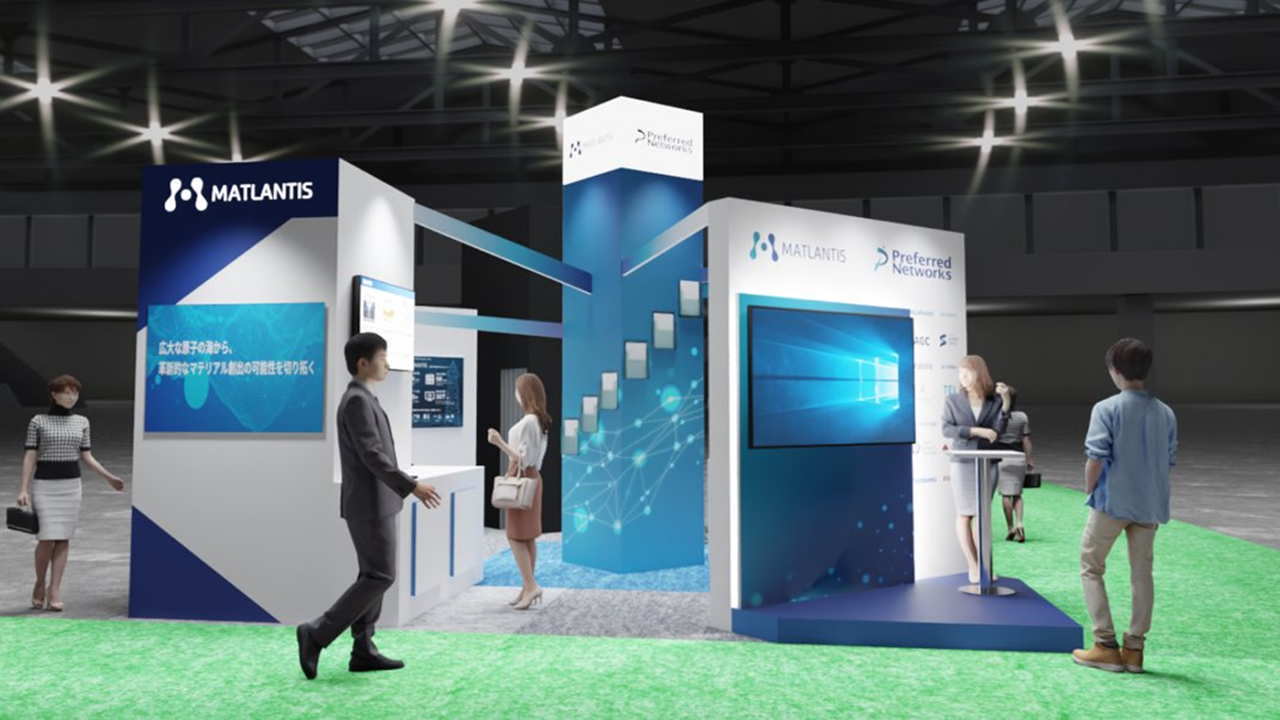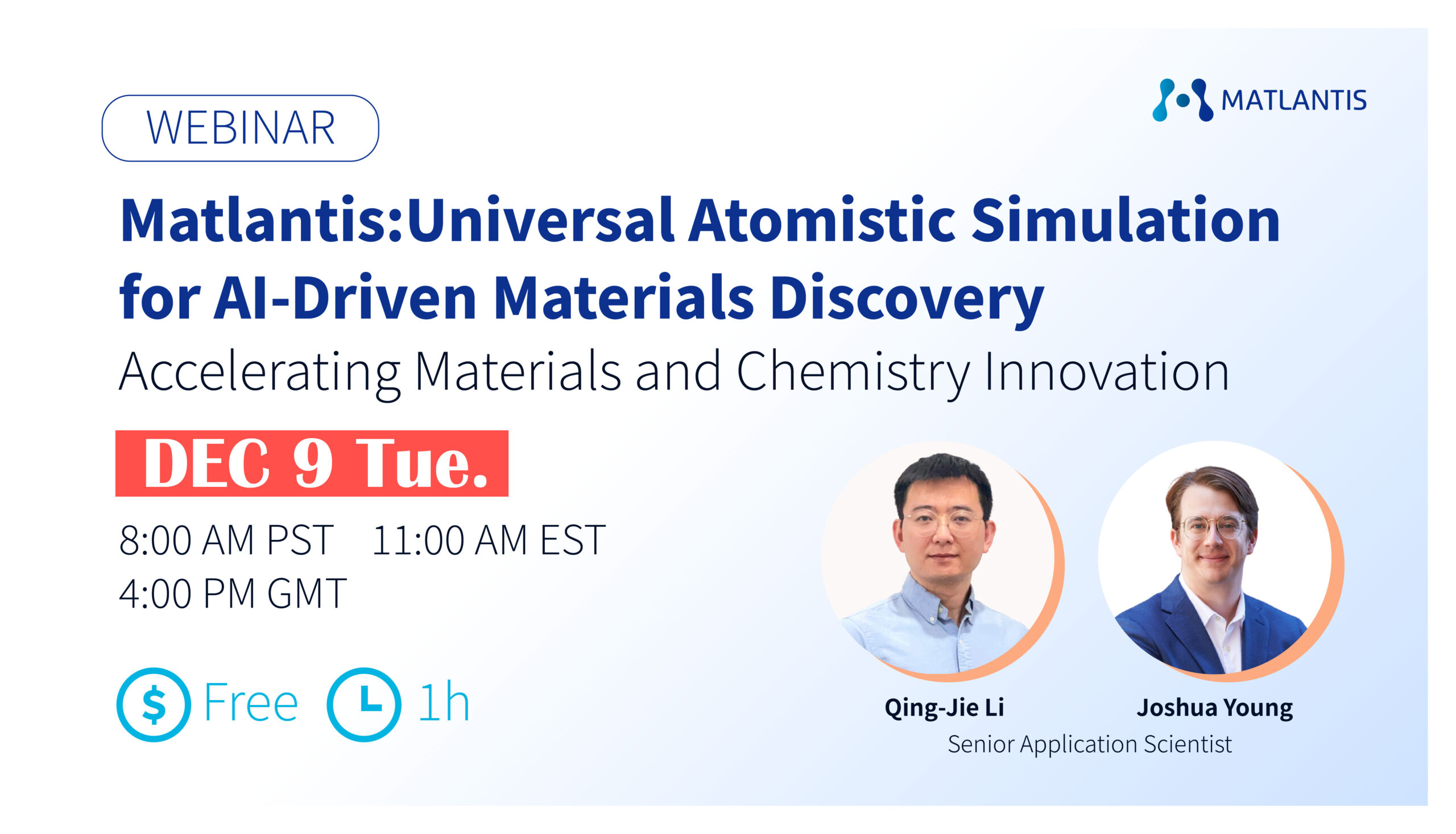Video Streaming
Webinars
Online2024.11.6 (JPN)
[Archived] Lecture by Professor Masanobu Nakayama of Nagoya Institute of Technology Event Report

In this webinar, Professor Masanobu Nakayama of Nagoya Institute of Technology gave a talk on the theme of "Reaction rate at the electrode/solid electrolyte interface in solid-state batteries," in which he shared his latest research results using Matlantis. More than 130 people attended the session, which was very meaningful, with lively Q&A sessions.
Even if you were unable to attend the webinar, we hope you will take a look at the materials and videos to make use of the latest research findings.
* Latest research results using Matlantis
Universal-neural-network-potential molecular dynamics for lithium metal and garnet-type solid electrolyte interface
Participant comments
- The overview of the Matlantis interface reaction simulation, as well as the calculation method and flow, were explained in detail, which was very informative.
- The comparison between DFT calculations and Matlantis was easy to understand even for beginners to simulation.
- I am also researching solid electrolytes, just like Professor Nakayama, so there were many parts of the lecture that were relevant to my research, and I found it very useful.
Highlights of the lecture
Background and motivation for Li/LLZ interface research
With the spread of electric vehicles, the battery market is expected to grow to approximately 10 trillion yen by 2023. However, there are safety issues with conventional batteries that use liquid electrolytes, and "all-solid-state batteries" that use solid electrolytes have attracted attention as an alternative technology. To realize all-solid-state batteries, it is essential to develop solid electrolyte materials with high lithium-ion conductivity, but finding promising candidate materials is not easy.
In this situation, the garnet-type solid electrolyte material Li x La 3 M 2 O 12 (abbreviated as LLZ) was discovered in 2003. Professor Nakayama of Nagoya Institute of Technology is conducting research on LLZ, focusing in particular on its interface reactions. With conventional calculation methods, it has been difficult to investigate in detail the ion exchange reactions at the interface between LLZ and lithium metal, and the atomic-level reactions that occur at the interface, but Professor Nakayama is working on an approach to elucidate these.
Results so far from DFT calculations (2022 paper)
In the research of the metal Li/LLZ interface model, we attempted DFT-MD calculations, but the calculation times for the 192-atom and 294-atom interface models were so long that we gave up on DFT-MD calculations at the time.
Instead, we performed calculations of static features, constructed a multi-metal Li/LLZ interface model with a limited number of atoms, and performed calculations of the surface energy and evaluation of wettability.
Furthermore, from the evaluated models, we extracted an energetically stable metallic Li/LLZ interface model and performed highly accurate DFT calculations. As a result, it was revealed that LLZ is not reduced by metallic Li. In addition, when lithium defects were introduced into LLZ and lithium was inserted between the lattice, the chemical potential was evaluated, suggesting that the lithium composition at the metallic Li/LLZ interface may be different from the calculation model previously considered.
Results from Matlantis (2024 paper)
First, we confirmed that Matlantis-MD could reproduce the results of DFT-MD using LLZ as the calculation target. We then used Matlantis to perform calculations on a metal Li/LLZ interface model to confirm the reproducibility. In Matlantis, we performed NNP-MD calculations on a 1024-atom model.
For the metallic Li/LLZ interface model, we performed a 1 ns Matlantis-MD simulation under different temperature conditions to confirm the stability of the garnet layer. We were also able to investigate the behavior of Li ion exchange at the metallic Li/LLZ interface through simulation. As a result, we confirmed that the hypothesis based on DFT calculations, "Li ions from metallic Li may enter the LLZ phase," was supported.
Furthermore, structural relaxation was performed on the metallic Li/LLZ interface model using Matlantis, followed by DFT calculations to evaluate the electronic structure. Band bending at the interface was confirmed, suggesting that this enhances the interfacial stability between LLZ and metallic lithium.
Download materials and watch videos here
公開日:2024.11.20



